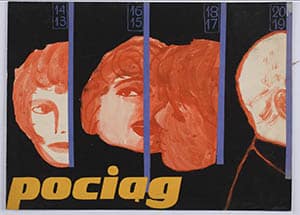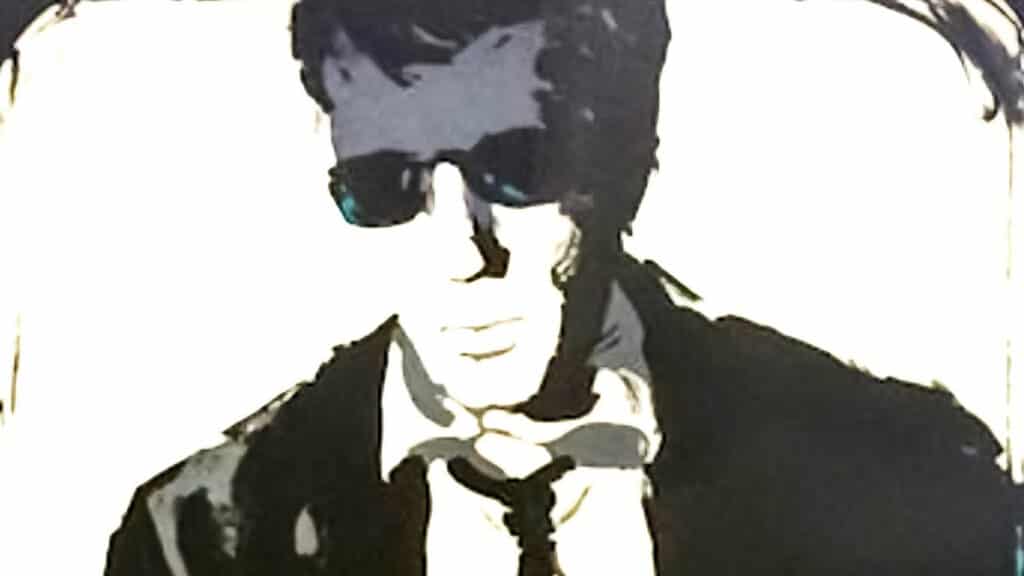

The Polish film industry is now mythic in stature when it comes to the international cinema scene. Popularly, critics and scholars alike tend to focus on lauded stalwarts such as directors Krzysztof Kieslowski, Roman Polanski, and Andrjez Wajda, but underrated pioneer Jerzy Kawalerowicz is the unsung master of Polish cinema, who arguably influnced and inspired all of the films that exploded onto the cinematic landscape in the 1950s and 1960s, just as the country was healing deep wounds inflicted by the devastation of World War II.
Kawalerowicz’s work would also set the intellectual tone for post-war acts of filmic subversion and transcendence within his country’s burgeoning industry, essential characteristics that Polish cinema, in general, would come to be known for. Kawalerowciz’s utter command of the filmic form and the language of cinema in his two masterworks – Night Train (1959) and Mother Joan of the Angels (1961) – exposes him as an unsung hero of the Polish Film School era (1955 – 1963).
In Mother Joan of the Angels, Kawalerowciz’s idea that something “evil” (the devil) is hiding within something “good” (the church) reminds the spectator of the post-war Polish dichotomies of rural life versus industrial life, the church versus state in a Communist system, communism versus freedom in all areas of post-war life, and, most importantly, the film captures the unpredictable spirit of national identities in flux. Using iconic, confrontational close-ups, where characters often gaze directly into the camera and theatrically address the audience, the director transposes an unusually bold, in-your-face subjectivity onto the people who inhabit this world, which in turn exposing a mysterious air of formal austereness in terms of the stark black-and-white image, yet retaining a shocking modern freshness to the raw, delirious performances.
The sheer variety of shots deployed by the director is impressive: birds-eye-views overheads, varying shot lengths, creeping pans and tilts. These unusual points of view make the spaces, which could be misrepresented as claustrophobic, alive and full of movement. This innovative use of limited filmic spaces and sparse mis en scene echoes the work of both Carl Theodor Dreyer’s and Ingmar Bergman’s masterpieces from this period. Dreyer’s Day of Wrath (1943) and Ordet (1955), Bergman’s The Seventh Seal (1957), The Magician (1958), The Virgin Spring (1960), Through a Glass Darkly (1961), Winter’s Light (1962), and The Silence (1963) are all obvious points of reference for Kawalerowciz’s Mother Joan of the Angels, from both a stylistic (impactful use of limited space) and thematic point of view (faith and religion dialectically clashing with modernity). Again, the idea of scarce resources in post-war Poland is echoed in the director’s economical use of his materials; nothing is wasted, and no shot is inconsequential or unnecessary.
As in Bergman’s oeuvre, Mother Joan of the Angels (which won a special jury prize at Cannes) is a somber chamber drama of old versus new guards that examines the primal push/pull of the occult, humanity, gender, and organized religion in the face of modernity. Kawalerowciz immediately deploys unusual camera angles and stylistic techniques and juxtaposes the innovative camera use with detailed character acting and barebones (yet highly impactful) sets and costumes, all of which are meant to indicate that there is something woefully askew in the troubled convent that Father Suryn (Mieczyslaw Voit) has come to investigate.
The strange happenings at this remote place for “holy maids” indicate that dark, sinister forces are afoot in this bucolic refuge, again in many ways mimicking the political state of post-World War II Poland’s governmental instability and the sea change in the way of Polish life, whose every move was now being closely watched and controlled by similar “dark forces” in vectors of institutionalized power. Kawalerowciz, daringly using the language of cinema to draw comparisons, subversively side-steps censorship to perhaps expose his country’s new government as being evil or even satanic. In this respect, Mother Joan of the Angels is reminiscent of Arthur Miller’s The Crucible, both in hysterical tone and in lasting contemporary relevance in terms of being a morality play that feels timeless.
As Father Suryn approaches the medieval-looking convent, Kawalerowciz deploys an amazing long tracking shot of the outside perimeter, where children are playing, unaware of the demonic presence inside, indicating perhaps a nostalgia for simpler, more innocent times. This shot is circular and goes an entire three hundred and sixty degrees around and captures the tentativeness on the face of the priest. Though Mother Joan of the Angels takes on many characteristics – religious film, historical film, allegory, and literary adaptation among them – this shot firmly posits the film into the horror realm. Brilliantly using dialectical montage – close-ups of braying, wild horses crashing into a tight shot Mother Joan (Lucyna Winnicka) herself, wild-eyed and sweaty in her cell, and then eerie stillness – the director has made a classic monster movie, where the monster is terrifying, yet somehow perfectly ordinary; as though the monster is there to warn mortals of what is coming, to warn of impending change, to warn that things might get worse.
This particular influence of Mother Joan of the Angels on similarly-eclectic ruminations on good and evil across the genres of modern cinema can be seen in a diverse array of films, from William Friedken’s The Exorcist (1971) all the way up to disparate films such as The Silence of the Lambs (Jonathan Demme, 1991) and Dead Man Walking (Tim Robbins, 1995). Kawalerowciz’s influence and importance is underestimated not only in terms of his impact on Polish film and filmmakers but also on world cinema.
Kawalerowciz (1922-2007) was of Armenian and Jewish descent and came from Gwoździec, a mainly Jewish town that was devastated by the Holocaust. He became the head of KADR’s production unit by 1955, working with directors such as Wadja, Tadeusz Konwicki, and Juliusz Machulski. He produced their films out of his studio and resisted making governmental communist propaganda.
It was during this time he met Winnicka, who plays the complex role of the possessed Mother Superior fearlessly and whose work in the film stands alongside the finest, most lauded performances of 1960s cinema. Winnicka’s is a true physical feat of acting, from the dancer-like movements as she crawls along the brick walls to the sensuous close-ups full of passion to the aggressive, twisted facial expressions in the later possession scenes, the actresses’ work is superlative and brave, and also worlds different from her her classic, more traditional femme fatale turn in Night Train two years earlier.
The films of Kawalerowciz exemplify both a Polish sensibility and a global stylistic influence as refracted through the post-World War II Polish sensibility, where there seemed to be an overabundance of the ‘hero versus villain’ theme in a cinematic world rife with shifting loyalties and mysteries. The goal of Kawalerowciz’s use of these themes was to tease out the ambiguities, to show that ”heroes and villains” were too simple a concept to be rigidly binary in the new Poland.
The director’s interest seems to be in deconstructing absolutes in finding the gradation between black and white. Finding these gray variations, nuances, and shadows (the title of his 1956 film), Kawalerowciz explored an array of human behavior that existed within the vast continuum of human experiences in the aftermath of a great tragedy for the country and the world. No film from this period exposes these ambiguities as beautifully as the elusive Night Train.
Made two years prior to Mother Joan of the Angels, Night Train, set literally on a moving passenger train, displays even more interesting scene construction and more exploration of the form and points of view than the later film. Beginning with a wispy jazz score and an overhead shot of a bustling train depot, with credits playing over the image and sound. Kawalerowciz brilliantly establishes the slick milieu with both diegetic and non-diegetic sounds as the camera pulls back to capture the trains pulling in and out of the station and then goes back into the crowd with an excellent, long tracking shot that settles on Jerzy (Leon Niemczyk), cool as ice in his mod sunglasses, running the con on the ticket taker. It seems he “forgot” his first-class ticket, but they let him on anyway. In quick succession, the radiant Marta (Winnicka), clutching a white portable radio that captures everyone’s attention, also boards the train.
Importantly, every frame of this opening sequence captures movement, both in the action within the scene and with the camera itself, expertly. The seamless camera work, full of sharp black and white angles and shadows, borrows liberally from popular noir genre conventions, with sumptuously contrasting imagery that is in constant motion, exposing the shadows and what lurks in between them (Fritz Lang’s 1954 Human Desire feels like a most apt comparison here, with it’s similarly lean, mean visual punchiness). Kawalerowciz is playful as well as experimental with the images in Night Train, which feel more in concert with the spirit of Edward Dmytryk, Jacques Tourner, or Billy Wilder, rather than with Polanski or Wadja or his Polish contemporaries who would borrow from Kawalerowciz’s bag of tricks in Ashes and Diamonds and Knife in the Water to name just two.
Polanski’s entire 1960s output, including Cul-de-Sac (1963), Repulsion (1965), and even, to a degree, Rosemary’s Baby (1968), all pay homage to the tones and moods of the influential Kawalerowciz canon, much in the way Kawalerowciz does to his cinematic forerunners. Mother Joan of the Angels and Night Train proves that the director’s work was arguably the most essential coming out of Poland and the post-World War II European film industry. Their imprint can still be found not only in the films of his Polish proteges but also in that of modern masters of tone such as David Cronenberg (Naked Lunch [1991] and Spider [2003]) or Michael Haneke (Time of the Wolf [2003] and especially The White Ribbon [2009]). Kawalerowicz’s work deserves to be more fully explored in the larger conversation of the importance of tone in relation to montage; techniques he refined, defined, and mastered during this heydey that have had a lasting impact on world cinema yet are curiously overlooked.


![Call for Papers: All Things Reconsidered [MUSIC] May-August 2024](https://www.popmatters.com/wp-content/uploads/2024/04/all-things-reconsidered-call-music-may-2024-720x380.jpg)



